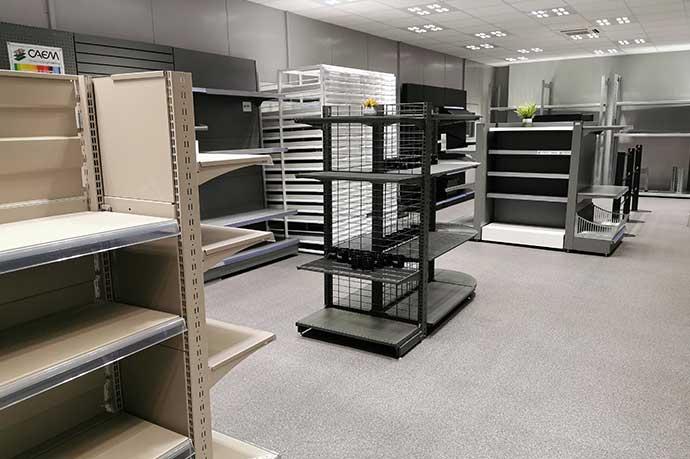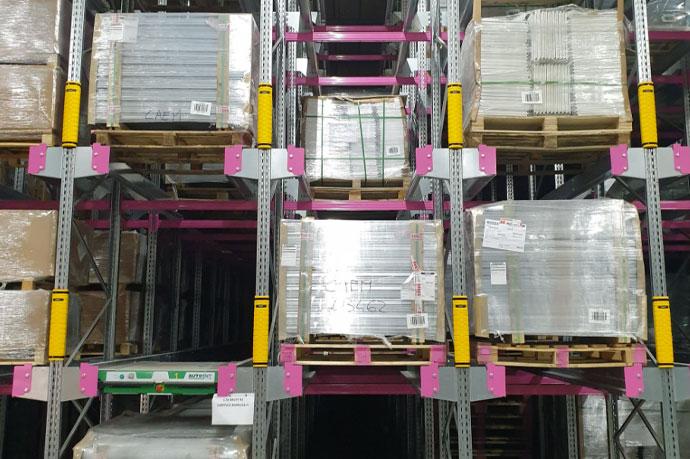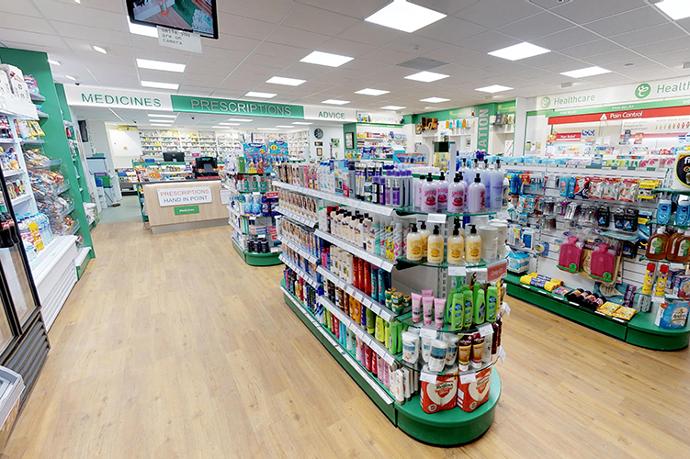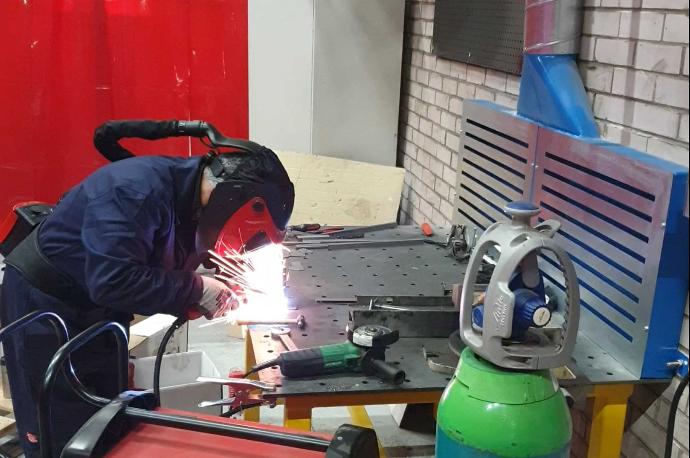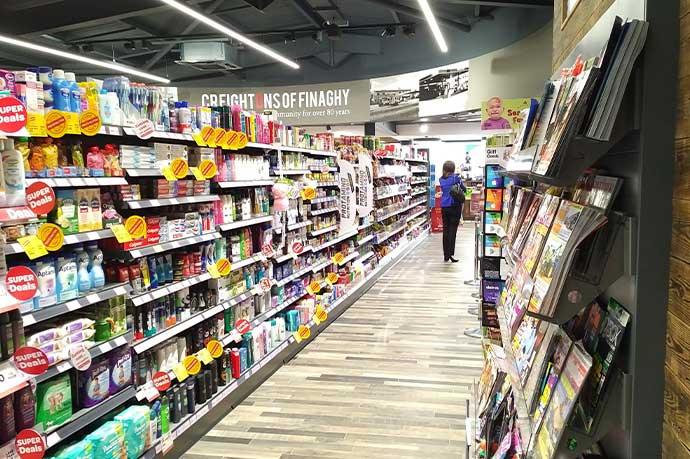https://www.caem.co.uk/wb9-industrial-modular-workbenches
Imagine walking into your workspace and finding everything precisely where it needs to be, tailored perfectly to your tasks and preferences. This isn't just a dream; it's the reality offered by customizable workbenches. In an era where efficiency and adaptability are paramount, these workbenches transform how professionals across industries approach their daily tasks. Whether you're in a bustling industrial setting or a quiet home workshop, a custom workbench can significantly enhance your productivity and comfort.
Discover the Versatility of Customizable Workbenches
Customizable workbenches are revolutionizing workspaces across industries. Studies show that implementing ergonomic workstations reduces cycle time by 18% during assembly and packaging operations in industrial environments. This substantial improvement comes from reduced movement, better tool placement, and enhanced adjustability of work surfaces.
What Are Customizable Workbenches?
At their core, customizable workbenches are flexible workspace solutions tailored to meet unique requirements. They combine adjustable components, specialized storage options, and purpose-specific materials to create workstations that perfectly align with their intended use. CAEM's workbenches stand out for their modular design approach, allowing clients to build systems that evolve alongside changing business needs.
Benefits of Customisation for Workbenches
Increased Productivity and Efficiency
A well-designed workbench does more than organize tools—it transforms workflow efficiency. Research indicates that ergonomic improvements in workspaces can translate to measurable productivity gains of 10-25% depending on task complexity. By eliminating unnecessary movements and positioning tools within optimal reach zones, these workbenches reduce fatigue and increase output quality.
Tailored Fit for Specific Needs
The true value of customization lies in precision-matching solutions to workplace challenges. CAEM's consultation process focuses on identifying specific operational requirements before recommending workbench configurations. This approach ensures every component—from height and width to surface material and storage integration—serves a deliberate purpose in maximizing effectiveness.
Flexibility and Adaptability in Various Settings
Modern work environments require adaptability, and today's workbenches deliver. McKinsey research shows that up to 50% of current work activities could be automated with existing technologies. Smart workbenches with technological integration facilitate this transition, supporting evolving workflows through modular design that allows easy reconfiguration as processes change.
Designing Your Ideal Workbench
Creating the perfect workbench involves balancing technical specifications, ergonomic principles, and practical functionality to develop a workspace that enhances both comfort and output.
Key Features to Consider
Sizing: Dimensions and Height Adjustability
Proper workbench dimensions directly impact usability and efficiency. Standard depths range from 600mm to 900mm, with width options typically spanning 1200mm to 2400mm. Height adjustability has become increasingly important, with research showing that properly configured work heights significantly reduce muscle strain and fatigue. CAEM's adjustable height workbenches accommodate users from 5'0" to 6'5", ensuring neutral posture regardless of operator size.
Worktop Materials: Which to Choose and Why
The choice of worktop material should align with specific applications:
|
Material |
Weight Capacity |
Best Applications |
Durability Features |
|
|
Steel |
1,500-20,000 lbs |
Heavy manufacturing, chemical exposure |
Chemical resistance, impact resistance |
|
|
Hardwood |
Up to 5,000 lbs |
Precision assembly, woodworking |
Comfortable surface, natural damping |
|
|
Composite |
750-1,000 lbs |
Electronics, light assembly |
ESD protection, chemical resistance |
CAEM offers all three surface options, with specialized treatments available for enhanced durability and application-specific performance.
Storage Solutions: Drawers, Shelves, and Compartmentalisation
Effective storage integration transforms a simple work surface into a comprehensive productivity center. The most efficient workbench designs incorporate:
- Tool shadow boards that reduce search time by up to 30%
- Modular drawer systems with customizable dividers
- Overhead shelving that maximizes vertical space utilization
- Cable management systems that eliminate workspace clutter
Aesthetic Design and Custom Finishes
While functionality drives workbench design, visual appeal and brand integration remain important considerations. CAEM offers custom color matching to align workstations with corporate branding, creating cohesive visual environments that reinforce organizational identity while maintaining a professional appearance.
Types of Customizable Workbenches
Different industries require specialized workbench configurations. Understanding the options available helps match the right solution to specific operational requirements.
Heavy Duty vs. Medium Duty Workbenches
Workbench load capacity determines suitability for specific applications:
- Heavy-Duty Workbenches: Engineered to support weights exceeding 5,000 lbs, these industrial-grade workbenches feature 10-gauge steel frames (approximately 0.135 inches thick) with reinforced components. Ideal for manufacturing environments where stability under substantial loads is essential.
- Medium-Duty Workbenches: Supporting loads between 1,000-1,500 lbs, these versatile benches typically use 12-gauge steel (around 0.105 inches thick), offering excellent functionality for maintenance departments, quality control stations, and general workshop applications.
CAEM's engineering team can provide detailed load capacity assessments based on specific application requirements, ensuring the selected workbench safely handles intended tasks.
Mobile and Stationary Options
Workspace flexibility requirements determine whether mobile or fixed workbenches offer greater value:
- Mobile Workbenches: Feature heavy-duty casters (typically 4" to 6" diameter) with locking mechanisms, allowing easy repositioning while maintaining stability during use. CAEM's mobile solutions include integrated cable management systems that prevent cord damage during movement.
- Stationary Workbenches: Provide maximum stability through leveling feet or floor mounting options. These fixed solutions eliminate unwanted movement during precision tasks and support heavier loads without compromising structural integrity.
Industry-Specific Workbenches
Manufacturing and Industrial Settings
Manufacturing environments require workbenches engineered for durability, safety, and workflow efficiency. CAEM's industrial workbenches feature reinforced steel construction with optional integration for powered tools, compressed air delivery, and data connectivity. Key specifications include:
- Weight capacities up to 10,000 lbs for heavy assembly operations
- Chemical-resistant finishes that withstand harsh industrial cleaners
- Modular designs that facilitate line reconfiguration during product changeovers
Laboratories and Research Facilities
Laboratory applications demand specialized surfaces and features that support precision work while maintaining cleanliness standards. CAEM's laboratory benches incorporate:
- Chemical-resistant epoxy or phenolic resin surfaces
- ESD (electrostatic discharge) protection for sensitive electronic components
- Integrated service fixtures for gas, water, and specialized research equipment
- Modular storage for laboratory supplies and documentation
Garages and DIY Workshops
Workshop environments benefit from versatility and comprehensive tool organization. CAEM's workshop solutions emphasize:
- Combination wood/metal construction for durability and comfort
- Integrated power distribution with circuit protection
- Specialized tool storage with quick-access features
- Adjustable lighting systems for detailed work
Innovative Accessories and Add-ons
Modern workbenches extend functionality through purpose-designed accessories that enhance ergonomics, organization, and task efficiency.
Ergonomic Enhancements
Height Adjustable Features
Height adjustability dramatically impacts operator comfort and productivity. CAEM offers three adjustment technologies:
- Manual crank systems for cost-effective flexibility
- Electric height adjustment for effortless position changes
- Pneumatic systems for environments where electrical components are restricted
These systems allow workstations to transition between sitting and standing positions, reducing fatigue and supporting diverse task requirements.
Anti-fatigue Mats
Standing workstations benefit significantly from proper floor support. Anti-fatigue mats reduce lower body stress during extended standing periods, with studies showing they can decrease discomfort by up to 50%. CAEM offers industrial-grade mats designed for:
- Chemical resistance in manufacturing environments
- Enhanced durability in high-traffic areas
- ESD protection for electronics assembly
Tool and Equipment Holders
Organized tool access directly impacts productivity by eliminating search time and reducing motion waste. CAEM's specialized tool organization systems include:
- Adjustable hooks and holders that accommodate varying tool sizes
- Shadow board systems for visual inventory management
- Quick-release mounting systems for frequently changed tooling
- Custom-designed holders for specialized equipment
Electrical and Lighting Solutions
Modern workbenches integrate power and illumination systems that enhance functionality:
- Integrated power strips with surge protection
- Task lighting with adjustable positioning and brightness
- USB charging ports for electronic devices
- Network connectivity for computerized workflow systems
CAEM's pre-wired options include UL-certified electrical components with plug-and-play installation, eliminating complex on-site electrical work.
Quality and Durability: Materials and Construction Techniques
The longevity and performance of a workbench depend largely on materials selection and construction methods. These factors determine not just durability but also suitability for specific applications.
Steel vs. Wood: The Best Material for Your Needs
Both steel and wood offer distinct advantages depending on application requirements:
|
Feature |
Steel Workbench |
Wood Workbench |
|
|
Load Capacity |
1,500–20,000 lbs |
Up to 5,000 lbs (quality hardwood) |
|
|
Durability |
Superior chemical/impact resistance |
Good impact resistance, less chemical resistance |
|
|
Surface Characteristics |
Hard, resist dents/scratches |
Softer, comfortable for precision tasks |
|
|
Maintenance Requirements |
Low (powder-coated finishes) |
Periodic sealing, susceptible to moisture |
|
|
Customization Options |
Highly modular |
Modular, but less adaptable than steel |
CAEM's hybrid designs often combine steel frames for structural integrity with wood or composite work surfaces for application-specific benefits, delivering the advantages of both materials.
Protective Finishes and Coatings
Surface treatments significantly extend workbench lifespan, particularly in challenging environments:
- Powder coating provides superior durability compared to wet paint, with 5x greater chip resistance
- Zinc galvanization offers exceptional corrosion protection for humid environments
- Sealed hardwood surfaces resist staining while maintaining wood's natural work surface advantages
- Anti-microbial coatings for laboratory and healthcare applications reduce contamination risk
CAEM applies industrial-grade finishes that exceed standard commercial offerings, resulting in surfaces that maintain their appearance and functionality despite years of heavy use.
Ensuring Longevity: Proper Care and Maintenance
Even the most durable workbenches benefit from appropriate maintenance protocols:
- Regular inspection of mechanical components (drawers, casters, adjustment mechanisms)
- Prompt cleaning of chemical spills to prevent surface degradation
- Periodic tightening of fasteners, particularly in mobile or adjustable systems
- Surface treatment renewal based on usage patterns and environmental factors
CAEM provides detailed maintenance guidelines specific to each workbench configuration, ensuring maximum service life and performance.
Environmental and Sustainability Considerations
Modern workbench manufacturing increasingly emphasizes environmental responsibility without compromising quality or functionality.
Eco-Friendly Materials and Practices
Sustainable workbench design considers both immediate and long-term environmental impact:
- CAEM sources FSC-certified wood components, ensuring responsible forestry practices
- Steel components contain up to 30% recycled content without sacrificing structural integrity
- Modular design philosophy facilitates component replacement rather than complete workbench disposal
- VOC-free surface treatments eliminate harmful emissions during manufacturing and use
The company's commitment to circular design principles ensures that workbenches can be easily disassembled at end-of-life, with up to 90% of materials being recyclable.
Energy-Efficient Manufacturing Processes
Production methods significantly impact environmental footprint:
- CAEM's manufacturing facility utilizes energy-efficient equipment that reduces power consumption by approximately 35% compared to industry standards
- Waste heat recovery systems repurpose thermal energy from production processes
- Water-based cleaning systems eliminate solvent emissions
- Precision cutting technology minimizes material waste through optimized nesting
These initiatives reduce the embedded carbon footprint of each workbench while maintaining competitive pricing and quality standards.
Cost Factors and Budgeting for a Custom Workbench
Understanding the financial considerations of custom workbenches helps organizations make informed investment decisions that balance immediate budget constraints with long-term value.
Factors Influencing Cost
Several elements significantly impact custom workbench pricing:
- Materials selection: Standard steel configurations typically cost 15-20% less than equivalent hardwood designs, while specialized surfaces like ESD-safe composites may add 25-30% to base pricing
- Size and complexity: Larger workbenches increase material costs proportionally, while intricate designs with multiple storage components can double base pricing
- Adjustment mechanisms: Electric height adjustment systems add approximately £300-£500 per workstation compared to fixed-height alternatives
- Integrated technology: Power distribution, lighting, and data connectivity features typically add 10-15% to total cost
- Volume considerations: Multi-unit orders often reduce per-unit costs by 10-25% through production efficiencies
CAEM provides detailed quotations that itemize all components, allowing clients to prioritize features based on budget constraints while maximizing functionality.
Balancing Quality with Cost
Effective workbench investment strategies focus on total value rather than initial purchase price:
- Identify critical vs. optional features based on workflow analysis
- Consider modular systems that allow future expansion rather than complete replacement
- Evaluate durability requirements based on actual usage patterns
- Calculate productivity improvements to determine ROI timeframe
- Balance standardization benefits against customization advantages
CAEM's consultation process helps clients develop specifications that align with both budgetary and operational requirements, ensuring maximum return on investment.
Case Studies: Custom Workbenches in Action
Real-world implementations demonstrate how customized workbenches solve specific operational challenges across diverse industries.
Real-World Applications in Various Industries
Engineering Manufacturer Improves Assembly Efficiency
A major engineering client implemented CAEM's state-of-the-art tech benches to streamline assembly processes. The custom workbenches featured:
- Height-adjustable surfaces with electronic positioning controls
- Integrated power and pneumatic distribution
- Task-specific lighting with adjustable intensity
- Digital work instruction displays with touchscreen interfaces
The reconfiguration resulted in significant time savings during assembly, improved overall productivity, and enhanced operational capabilities by optimizing available workspace. The ergonomic design reduced operator fatigue, leading to measurable quality improvements.
Precision Engineering Workshop Enhances Production Line
A precision engineering company partnered with CAEM to develop specialized workbenches with anti-static surfaces. The implementation included:
- Custom-sized benches that perfectly fit limited floor space
- Integrated measurement equipment mounts
- Specialized tool organization systems for micro-tools
This customization enhanced workflow organization due to tailored bench sizing and anti-static surfaces, leading to increased efficiency on production lines. The company reported competitive cost savings through reduced error rates and better material handling.
Customer Testimonials and Feedback
CAEM's clients consistently report significant benefits from their custom workbench implementations:
"The modular design of our CAEM workbenches has transformed our assembly area. We've measured a 15% reduction in assembly time since implementation, and the ergonomic features have virtually eliminated the back strain complaints we previously encountered." - Production Manager, Electronics Manufacturing
"After installing CAEM's heavy-duty workbenches in our fabrication shop, we've seen dramatic improvements in organization and workflow. The custom storage solutions eliminated the clutter that was slowing us down, and the durable construction has withstood everything we've thrown at it." - Workshop Supervisor, Industrial Fabrication
Trends and Innovations in Custom Workbench Design
The evolution of workbench design continues to accelerate as new technologies and workplace philosophies emerge, creating opportunities for enhanced productivity and flexibility.
Technological Advancements
Recent innovations are transforming workbench functionality:
- IoT Integration: Smart workbenches now incorporate sensors that track tool usage, monitor environmental conditions, and integrate with inventory management systems
- Augmented Reality Support: Advanced workstations include mounting systems for AR displays that overlay work instructions onto physical components
- Automated Tool Control: RFID-enabled storage systems track tool access and usage, improving accountability and reducing losses
- Collaborative Robot Integration: Dedicated mounting points and safety systems allow human-robot collaboration at shared workbenches
CAEM's research and development team continuously evaluates these technologies for inclusion in their workbench designs, ensuring clients benefit from proven innovations that deliver measurable benefits.
Predicted Future Developments
The workbench of tomorrow will likely incorporate several emerging trends:
- AI-Enhanced Workflow Support: Intelligent systems that anticipate tool and material needs based on work order requirements
- Biophilic Design Elements: Integration of natural materials and plants to improve worker wellbeing and cognitive function
- Zero-Carbon Manufacturing: Production methods that eliminate carbon emissions through renewable energy and innovative materials
- Reconfigurable Modular Systems: Workbenches that transform between completely different configurations in minutes rather than hours
CAEM's design philosophy emphasizes forward compatibility, ensuring that current workbench investments can accommodate these emerging technologies as they mature.
FAQs
How Do I Start Designing My Custom Workbench?
Beginning your custom workbench design process involves several key steps:
- Define Your Requirements: Document specific tasks, tools, and materials that will be used at the workstation
- Consider Your Space: Measure available floor space, noting any constraints like columns, electrical outlets, or clearance requirements
- Identify User Needs: Consider who will use the workbench, including height variations, handedness, and specific ergonomic concerns
- Plan for Future Growth: Anticipate how needs might change over the workbench's lifespan
CAEM's design consultants can guide you through this process, using specialized software to visualize configurations before finalization.
What are the Lead Times for Custom Manufactures?
Lead times vary based on design complexity, current production capacity, and material availability:
- Standard configurations with minimal customization: 2-3 weeks
- Moderately customized workbenches: 4-6 weeks
- Highly specialized designs with unique components: 6-8 weeks
CAEM provides detailed production timelines during the quotation process, with project managers who keep clients updated throughout manufacturing.
Can I Update My Workbench in the Future?
CAEM's modular design philosophy specifically supports future modifications:
- Standardized mounting points accommodate accessories introduced years after initial purchase
- Component-based construction allows replacement or upgrading of individual elements
- Documentation includes specifications for adding future components
- Backwards compatibility is maintained across product generations
This approach ensures that workbenches remain relevant as operational needs evolve, extending useful life and improving return on investment.
Conclusion: The Custom Workbench as an Investment in Efficiency and Innovation
Investing in a custom workbench represents much more than purchasing equipment—it's a strategic decision that directly impacts productivity, worker satisfaction, and operational capability. Organizations that implement properly designed workbenches report significant benefits:
- Reduced cycle times for assembly and processing tasks
- Improved ergonomics that decrease fatigue and injury risk
- Enhanced organization that eliminates wasted motion and search time
- Flexible configurations that adapt to changing production requirements
CAEM's WB9 industrial modular workbenches exemplify this approach, offering businesses a comprehensive, future-ready solution. These workbenches combine robust construction with adaptable design, ensuring they remain valuable assets as operations evolve. The initial investment delivers ongoing returns through improved efficiency, reduced errors, and enhanced worker satisfaction.
By partnering with experts who understand both current requirements and future trends, organizations can develop workspaces that serve as platforms for continuous improvement and innovation. A thoughtfully designed custom workbench doesn't just support current operations—it enables new possibilities and approaches that drive competitive advantage.
https://www.caem.co.uk/wb9-industrial-modular-workbenches
